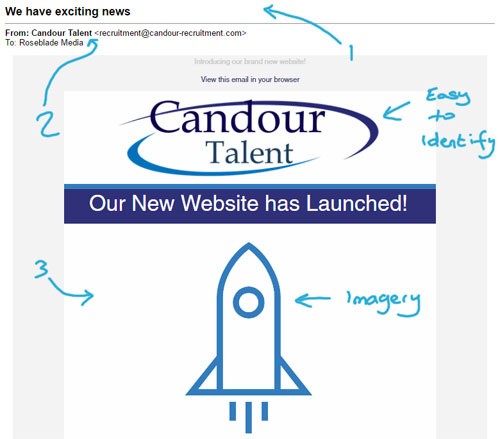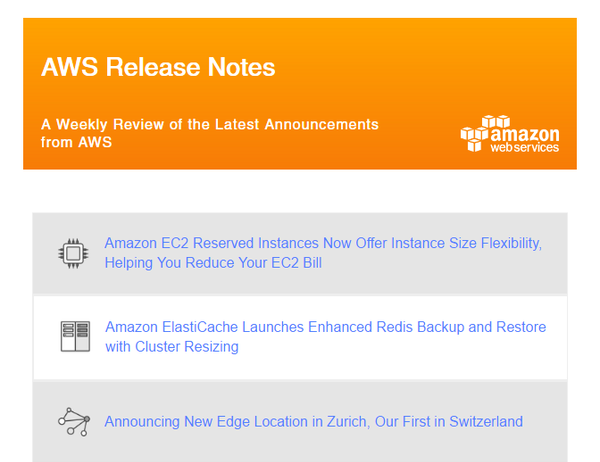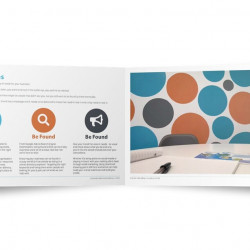Everyone would love to see that their emails are being opened, whether they are business or personal emails; I mean, who likes being ignored?
We all receive marketing emails. If you're anything like me, you can receive anything from 1 to 50, or more, every day, and that can encourage a lot of unsubscribing. But what really catches your recipients eye? What makes them open your email over everyone else's? Better yet, what makes them click through to the end goal?

1. Subject Lines
One of the key parts of an email - the subject line. We all see them, and it's often the deciding factor to whether or not an email is opened. Why should you read that email from Amazon? What makes the email from Tesco so appealing?
The subject line should be seen in a similar light to a newspaper headline in that it should tell the user enough to make them want to read more, but not tell them the full story.
So, how can you ensure it's spot on?
- Try and keep it short and to the point - keep it within 35 - 45 characters (including spaces) and 5 - 6 words
- KISS (Keep It Simple, Stupid) - Make sure it's relevant, simple and you sell the benefits to the user
- Add Value - Why should the user be opening your email?
- Add humour to subject lines - Make them stand out with something witty, allowing you to connect with your audience
- Emphasise the call to action of the email - Phrases like 'find out more' or 'learn more' can help increase your open rate
Many emails can become lost during transit, or even when they hit the user's email account without them knowing. How many spam emails do you see in your spam box? If you use a well known and trusted email provider (such as Google or Outlook), then there's probably quite a few in there. They usually have things in common, so it's worth looking at these from time to time to see what to avoid.
Here are a few more things you should try and avoid with emails:
- CAPITAL LETTERS - These are often seen as shouting. Don't shout at your users
- Spam phrases - Using phrases like "Buy now!", "Once in a lifetime opportunity" can be seen as spam. Avoid them if you can
- Exclamation marks - Similar to the capital letters, it seems like you're shouting at users. Don't do it!!!!!!!!
2. Your Name
Ok, you may at this point be thinking "But I can't change my name!" Not strictly true with emails.
The from name is one of the important things. If people don't know it or recognise it, they won't open your email - they'll delete it or mark it as spam. Using your company or brand name is usually a good move.
All our emails come from "Roseblade Media" for example. In a similar way, Argos sends theirs from "Argos", Tesco from "Tesco", and, well, you get the idea.
3. The Copy
Email copy should be short, sweet and to the point. Even if the email is usually full of information (like a newsletter), trim it down and entice users to click the links to read more information.

This email from Amazon about changes to it's Web Services arm of the company is a good example of this. It contains links to it's latest articles with informative titles - "Helping You Reduce Your EC2 Bill" for example.
These links then take the reader to their website, which is then counted a click. The user is obviously interested, and you can direct them to the end goal (whether that's a phone call, or email etc.) through the landing page.
Don't forget - good imagery, strong colours and well positioned call to action links can help strengthen your campaign too.
Other Tips
Of course, content, subject and from labels are important, but there are other things you can do to ensure your audience react to your campaigns:
-
Keep multiple lists - Not all of your users are interested in the same thing. What if you had a shop in South Wales, and one in North London. Keep your customers separated by interest (ask them for these). By keeping the emails targeted, you are likely to have a greater impact.
-
Don't flood their inbox - If you are sending emails too often, people will become tired and will unsubscribe from them. Limit yourself, and plan your email campaigns out so they don't clash. 1 or 2 times a month is usually enough for most businesses. But consider your audience and their interests. If they've signed up for daily updates, then they're clearly interested in daily emails.
-
Be mobile friendly - Smartphones are part of everyday life. People use them to read emails, so make sure your campaigns can be read easily. If they don't look good, they certainly won't click through.
Need a Helping Hand?
We all need a helping hand sometimes. Roseblade Media can help manage your lists and even integrate them with your existing website and transfer contacts over. We build campaigns using tools to ensure they work on a high number of devices.
If you need help - please don't hesitate to get in touch, and see how we can help improve your email marketing.





